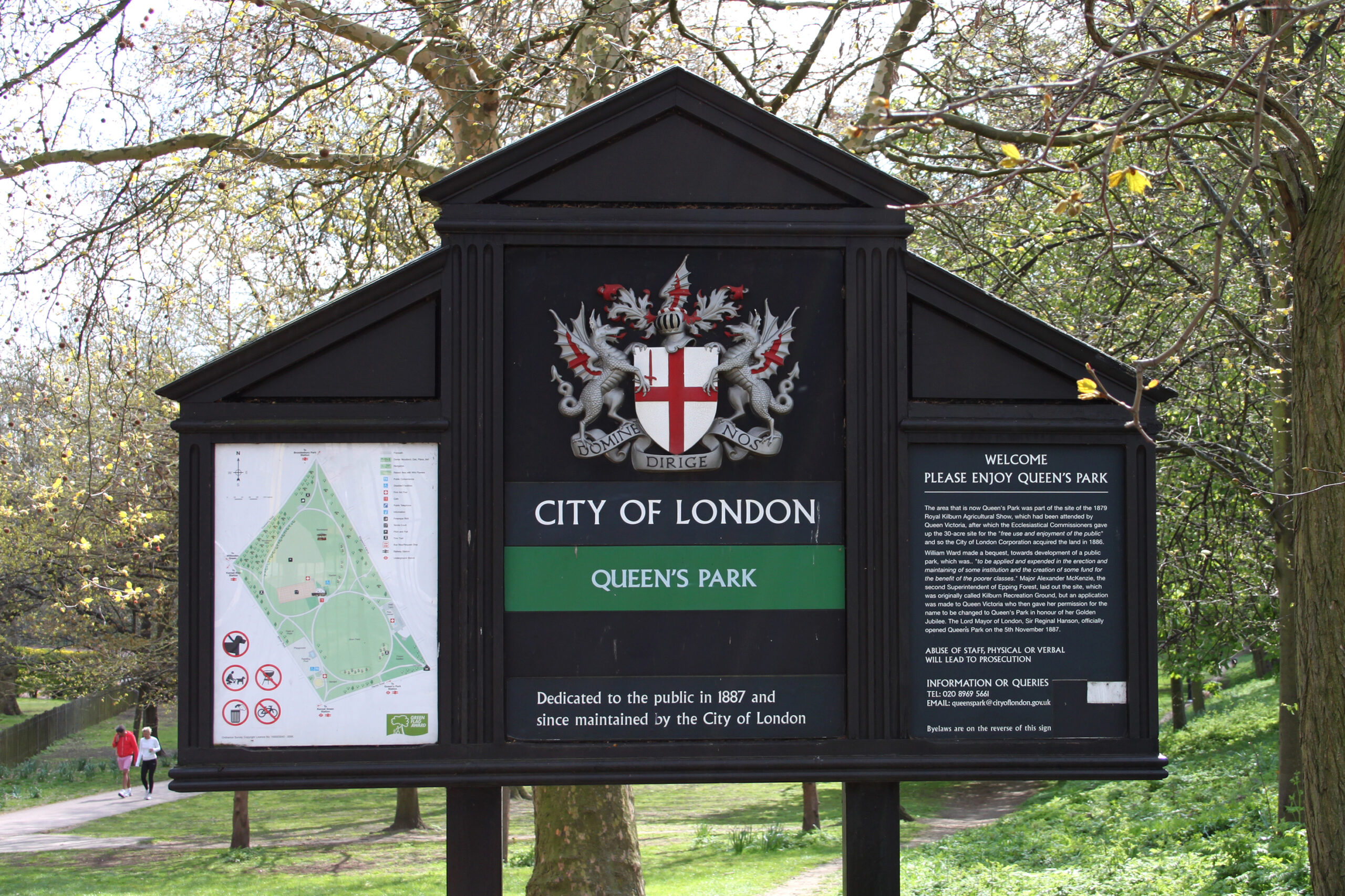
The story of Queens Park.

Queen’s Park opened in 1887 for Queen Victoria’s Golden Jubilee and was named in her honour. Over 30 acres of public space immediately west of Kilburn and south of Brondesbury Park. Bordered by Kingswood Avenue to the east, Chevening Road to the north, Harvist Road to the south and Milman Road to the west, the park lies at the heart of a neighbourhood of Victorian and Edwardian houses built from 1895.
From the start….
In 1879 the Royal Agricultural Society (RAS) chose a 100 acre site in Willesden for their annual show, displaying the latest achievements in agriculture and farm machinery. Torrential rain dominated the entire week and although it attracted 185,000 visitors (half on the day Queen Victoria attended), it made a loss of £15,000, prompting its move to Twyford. A campaign was then launched to secure the whole 100 acres (west from Salusbury Rd to Chamberlayne Rd) as a park to ensure some green space was retained in this fast developing part of London. In the end, the central 30 acres was purchased and, eight years after the RAS show, it was opened by the Lord Mayor in 1887 ‘for the free use and enjoyment of the public forever’. House building started with Harvist Road, most of which was completed by 1899. By that time, local builders Bennet and Gimbrett had commenced construction of the houses on the west side of Chevening Road. Other builders and architects also contributed to the western part of the estate, helping to generate the varied architectural character within the Kempe, Keslake and Chamberlayne Roads. The northern half of Queen’s Park was developed around the park between 1895 and 1905 by developer Solomon Barnett, who developed much of Kilburn. The houses in the Queen’s Park Conservation Area are of late Victorian and Edwardian design (1895-1905) with the Park functioning as a frame to the architecture and regular street plan of the area. Kingswood Avenue, also constructed by Solomon Barnett, consists of two storey terraced houses individually definned by projecting parapets capped with terracotta ridges. Chevening Road’s houses were constructed by G F Kendall between 1898- 1905 and are characterised by relatively large, red brick two storey semi-detached houses decorated with a mixture of classical and gothic mouldings with Welsh blue slate roofs. Whereas homes on Harvist Road were built in red brick with Chinese-influenced window sashes.
The Design….
Queen’s Park was designed and laid out by one of London’s most influential park designers, Alexander McKenzie, who also designed Alexandra Palace Park, Southwark Park, Finsbury Park and Victoria and Albert Embankment Gardens. His design provided a great variety of landscapes, including small formal areas, open expanses of lawn, dense shrubberies and highly colourful bedding plants. Whilst it has been simplified since, the essence of McKenzie’s original vision remains firmly in place. One of the great attractions of the park since 1891 is the colourful bandstand that remains a great symbol of Victorian park life and the moral influence of music at the time. Built by Walter MacFarlane & Co at a cost of just £342.11, it was only fully restored in 1994. It is also interesting to note that during WWII the park was used for allotments, air-raid shelters, army huts and a barrage balloon. The first café was built in 1890 and took the form of a rustic-style chalet. This was replaced in 1960 and has since been refurbished and enlarged. Over the years the park has evolved, whilst remaining true to the ideals of its Victorian founders. Now managed by the City of London Corporation, Queen’s Park has been awarded a Green Flag for its services and environment initiatives. Facilities in the park include six all-weather tennis courts, a pitch-and-putt course, a pétanque piste, ornamental gardens, a children’s playground with a paddling pool, animal farm and a café.
Today…
The neighbourhood of Queen’s Park is arguably more attractive to families and active business professionals than ever. Thirtysomething ex-Notting Hillites with young families in tow- are lured north not only by the size of the houses and gardens, but also by the tree-lined environment and village atmosphere. The park provides a peaceful heart to a community which also enjoys the bustle of Chamberlayne and Salusbury Roads, with their prosperous shops, restaurants, cafés and industry-leading gastropubs. Across the street, nestled on the grounds of Salusbury Primary School, is the Sunday morning Farmers’ Markets. It was recently voted ‘Best Farmers’ Market in the UK’, attracting avid fans from north and west London.